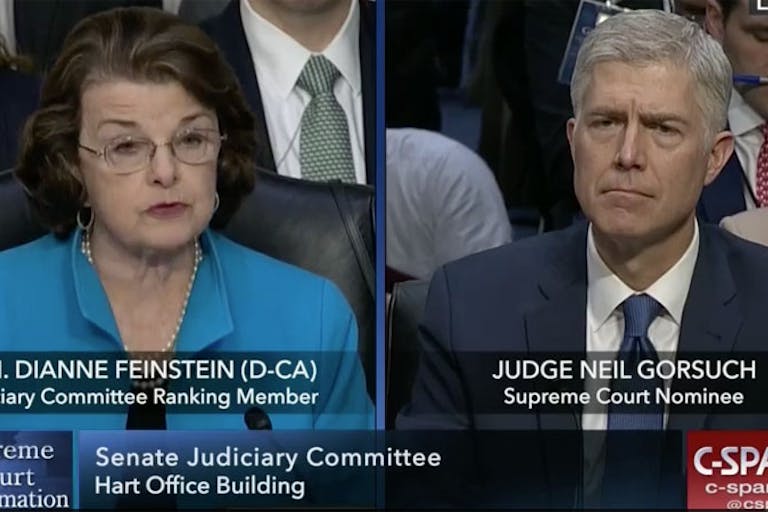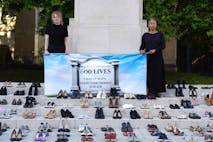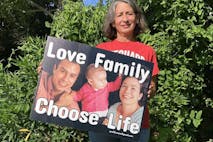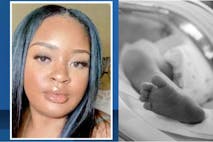
14th Texas county outlaws abortion and use of roads for ‘abortion trafficking’
Mark Lee Dickson
·
Did Senator Dianne Feinstein accidentally admit that abortion takes human life?
During confirmation hearings for Supreme Court nominee Neil Gorsuch, Senator Dianne Feinstein (D-Calif.) questioned Gorsuch on his views about abortion and euthanasia. Newsbusters points out that in her questioning, she referred to a book he had written, saying, “I will refer to the part of the book that concerns a lot of people who believe in the woman’s right to choose. ‘Human life is fundamentally and inherently valuable and the taking of life by private persons is always wrong.’”
Feinstein may have believed this was part of a ‘gotcha’ question for Gorsuch, but in truth, it may have revealed something Feinstein didn’t intend.
What Feinstein is saying here is that Gorsuch’s statements about “human life” being “valuable” are concerning to abortion advocates. She is also expressing concern about his belief that “the taking of life by private persons is always wrong.”
But why should this be? Why should there be any concern from abortion advocates with regard to these statements? After all, they tell us that what’s growing in the womb isn’t really human life, ignoring all science to the contrary — science like this:
1. The preborn child, from the moment of fertilization, has his or her own DNA, distinct from the mother’s and father’s.
Distinct DNA means a distinct life. As Live Action News’ Kristi Burton Brown stated, “Countless medical textbooks – from various science specialties – agree. From the very first moment, a human being is a human being.”
2. The preborn child’s heart begins to beat at around 18-21 days post-fertilization.
Article continues below
Dear Reader,
In 2026, Live Action is heading straight where the battle is fiercest: college campuses.
We have a bold initiative to establish 100 Live Action campus chapters within the next year, and your partnership will make it a success!
Your support today will help train and equip young leaders, bring Live Action’s educational content into academic environments, host on-campus events and debates, and empower students to challenge the pro-abortion status quo with truth and compassion.
Invest in pro-life grassroots outreach and cultural formation with your DOUBLED year-end gift!
However, a new study puts this milestone even earlier, writes Live Action News’ Susan Michelle-Hanson: “… [A] baby’s first heartbeat may occur as early as 16 days after conception, rather than the three weeks previously thought.”
3. By just eight weeks post-fertilization (the beginning of the fetal stage), all major organ systems have been formed.
This means that the “[s]tomach produces digestive juices…. Kidneys begin to function. Taste buds are forming.” Remember, this is still in the first trimester of pregnancy, when most abortions take place.
To anyone with a rudimentary knowledge of fetal development, statements like “it’s not a baby at this stage,” “no, it doesn’t really look like a baby (at 23 weeks),” and “it’s not a person” seem to leave the realm of ignorance and venture into the realm of outright lies.
I could go on, but Live Action News’ Sarah Terzo has a great summary on the science about preborn life:
By a mere 22 days after conception a preborn baby has a heartbeat. You can see the heart of a four-and-a-half-week-old preborn baby here. By 60 days, the baby has brainwaves. By seven weeks, she has developed arms and legs and she can have the hiccups. She can also move her arms and legs. By eight weeks, she is fully formed and is already showing right or left hand dominance. The eight-week-old embryo also responds to touch. By nine weeks, she can grasp an object, stretch, open her mouth, roll over in the womb, and move her tongue. Her kidneys are producing urine, she makes breathing motions, and most of her organ systems are present — including, in a female preborn baby, a uterus and ovaries of her own.
All this being said, Senator Feinstein and her cohorts don’t believe any of this science really means anything at all. And they certainly don’t believe these facts lead to the conclusion that women shouldn’t be able to legally kill their preborn children. Sen. Feinstein and friends apparently find the idea that “human life is fundamentally and inherently valuable” to be a threat to their way of thinking.
And in admitting they feel threatened by this idea, they inadvertently admit that abortion takes human life.
Live Action News is pro-life news and commentary from a pro-life perspective.
Contact editor@liveaction.org for questions, corrections, or if you are seeking permission to reprint any Live Action News content.
Guest Articles: To submit a guest article to Live Action News, email editor@liveaction.org with an attached Word document of 800-1000 words. Please also attach any photos relevant to your submission if applicable. If your submission is accepted for publication, you will be notified within three weeks. Guest articles are not compensated (see our Open License Agreement). Thank you for your interest in Live Action News!

Mark Lee Dickson
·
Pop Culture
Cassy Cooke
·
International
Cassy Cooke
·
Analysis
Cassy Cooke
·
Analysis
Angeline Tan
·
Analysis
Cassy Cooke
·
Human Interest
Kelli Keane
·
Activism
Kelli Keane
·
Politics
Kelli Keane
·
Human Interest
Kelli Keane
·
Abortion Pill
Kelli Keane
·